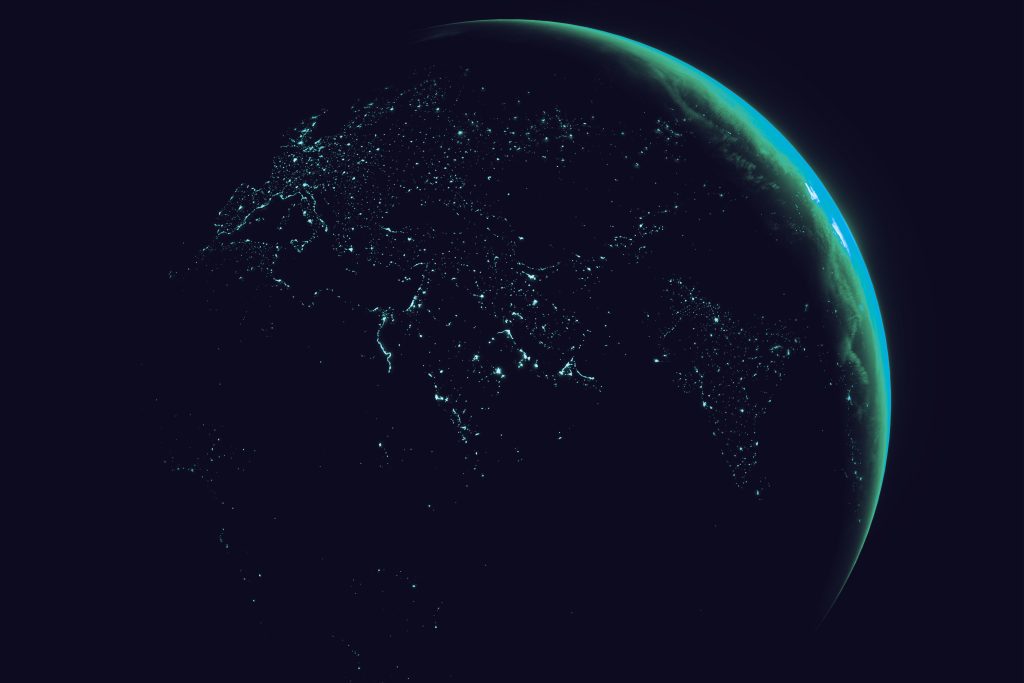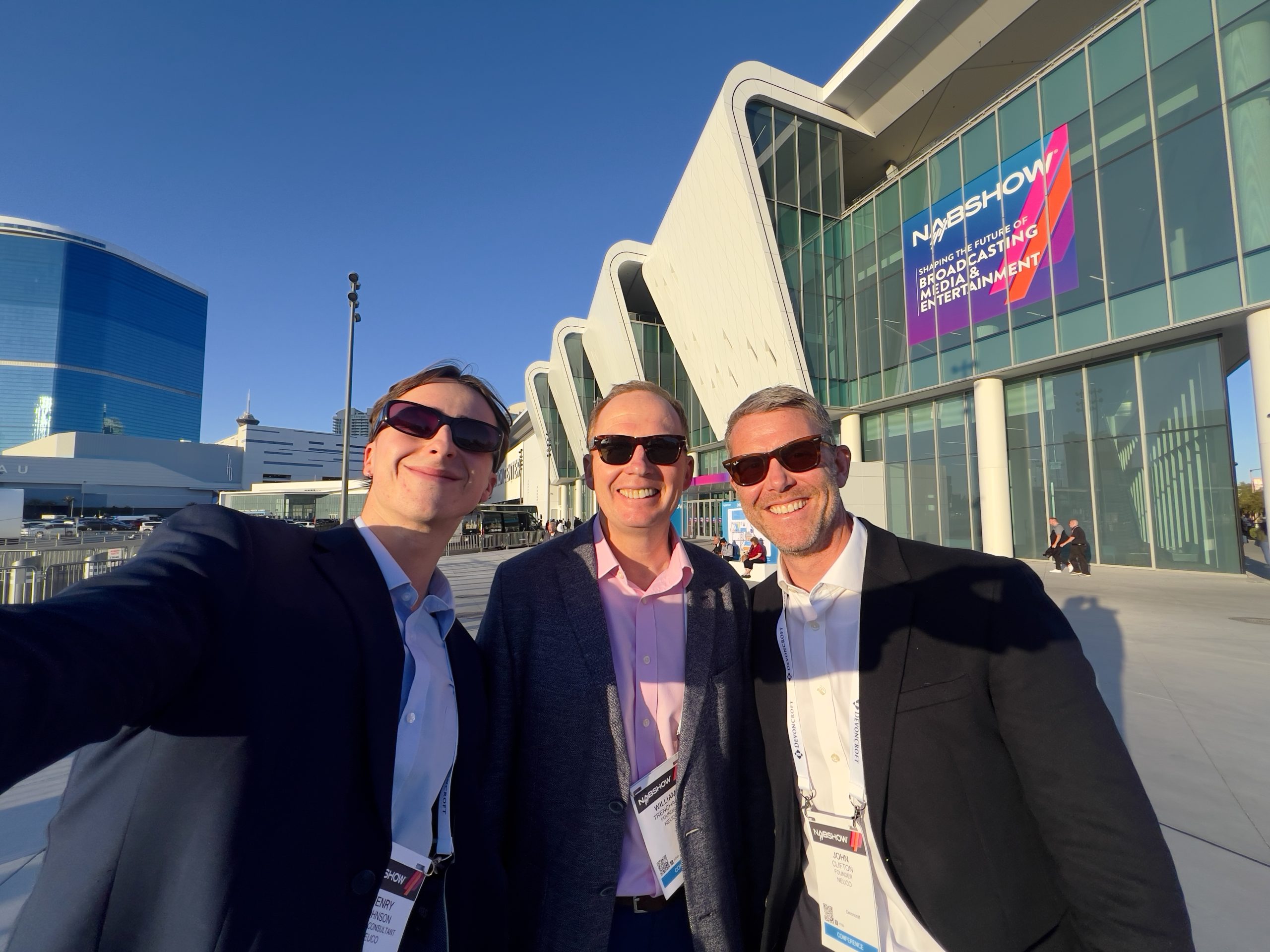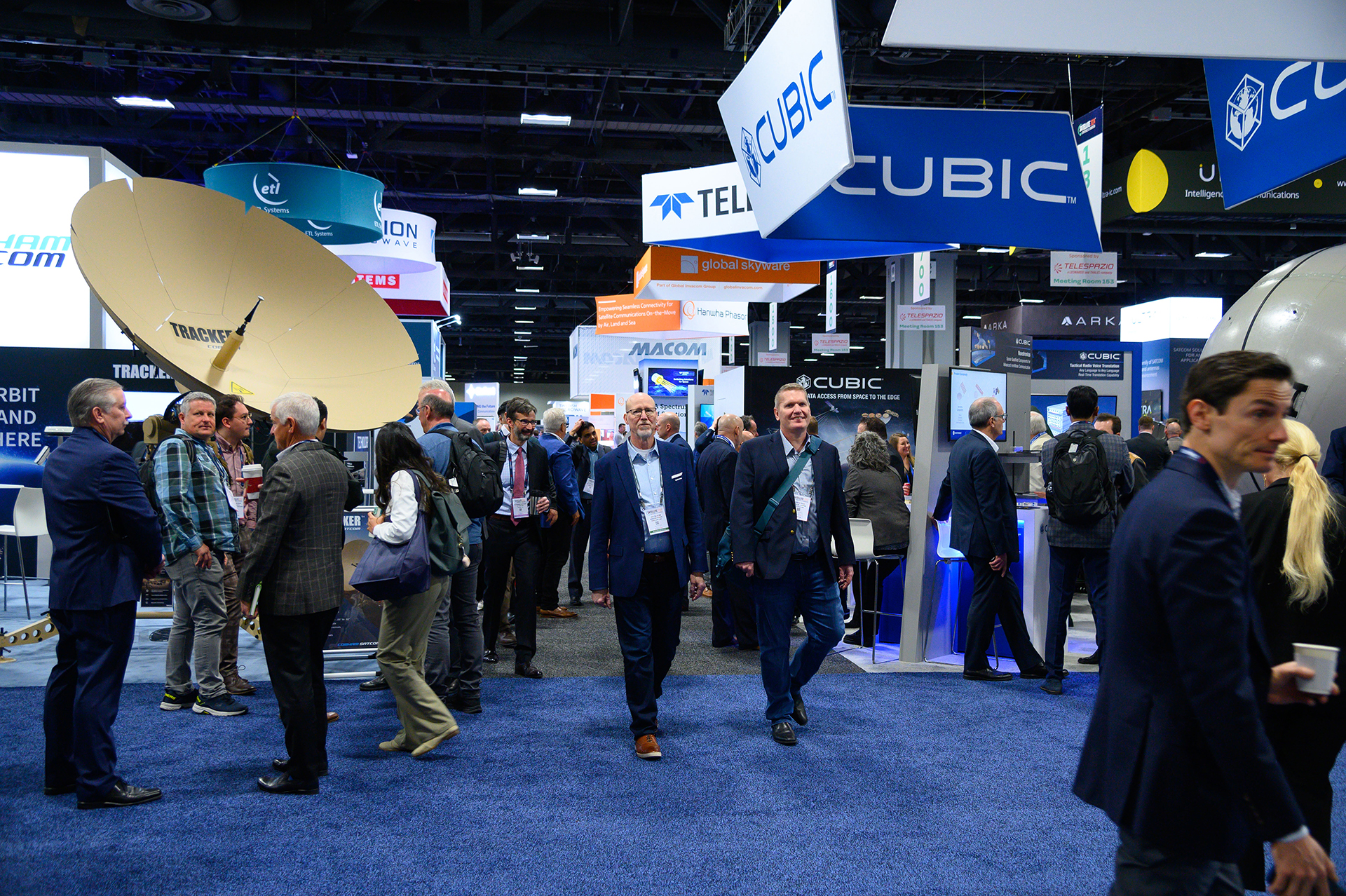The younger generations are facing a range of challenges on a global scale. On Episode 22 of The Satellite & NewSpace Matters Podcast we were joined by Jim Keravala, the Co-Founder, Chief Executive Officer & Chief Architect at OffWorld, to talk about the innovative solutions that the space industry is creating to tackle these issues. Jim has extensive experience in a range of space sectors, and currently sits on several advisory boards such as the National Space Society, International Moonbased Alliance and the Moon Village Association. He co-founded OffWorld to extract critical minerals, minerals and materials on Earth and in space using swarms of smart industrial robots. Read on to how space is set to save the world.
“The challenges that we’re facing today are, in part, born out of our own successes as a species. The other part is our systemic, steady state of ongoing risks that are always in the background – and to some extent, the intersection of the two is another challenge in itself. I think the manifestation of all of these challenges is not the uncertainties of big environmental cataclysms or other single impact changes. The more concerning risks are those that are subject to cascading sequencing.
There’s always the asteroid impact issue. Stars could go supernova and create an untenable environment for life on this planet. There’s always the big issues like that, and those issues are real, but the probability of those occurring in the next 100s or 1000s of years are very, very small. The things that seem small and innocuous, such as the amount of greenhouse gases in the atmosphere, are cascading triggers. Greenhouse gases lead to atmospheric temperature rises, leading to loss of biodiversity, leading to changes in weather patterns, climate, ocean current path patterns, which can then lead to reduction of polar ice caps, which can add to the lack of reflectance of Sun’s energy, which can then start increasing those cycles. I’m more concerned by these dynamic instabilities which start running towards catastrophe.
It’s my personal opinion that it’s a combination of natural cycles and small catalytic inputs into that environmental system that is the biggest threat. There’s a lot of debate around climate change and the origin of it; ‘Is it human generated or is it natural?’ That’s a less important question than ‘What are we going to do about it?’ For everything else we do we tend to take out insurance, whether it’s our car, our home, our pets – whatever is important to us, we insure it. We should take out some form of insurance for our planet as well. That form of insurance is not about creating an escape valve, it’s about opening up a closed system.
If we can open up the system and use the resources of space, we can genuinely help solve some of these challenges. I believe we are in the midst of these changes already. I personally don’t believe that as a species we’re really that well equipped to deal collectively and sensibly and proactively with challenges that we rationally are aware of. As a species, we tend to wait for things to happen and then deal with the consequences afterwards, despite being able to afford what’s needed to address it now. We just don’t act proactively. To some extent, that’s the nature of our global economic structures as well. The economic structures respond to value in real time, and those same rules for creating long term visions of entrepreneurial change are unfortunately the same rules that applied to long term visions of environmental mitigation. So understanding that, what can we do to break down the problem and solve it once and for all?

I personally believe there are several different classes of mitigation work that can be done. The first is assuming that the consequences of the changes we’re undergoing now are going to happen. If we were going to address climate change, we should have started acting 50 years ago when it became obvious, because it’s too big of a needle to move now. The question that needs more urgent attention is what happens to coastal regions in deprived areas? What do we do for those communities? What are the risks of micro weather pattern changes that are emerging? Whether it’s more hurricanes, greater heat domes, etc, what does that do for agriculture? What does that do for the availability of fresh water?
The most vulnerable will be the most affected, so coastal regions in emerging nations whose economies and infrastructure are less organised will suffer the most. So what can we do to get ahead of solving that problem? With a focussed enough set of challenges, there can be economic solutions to address them. They have to be economically viable solutions in order for us to help our fellow human beings. The end to end system will not mobilise unless people are making money off it, which sounds a little brutal, but evidence has shown that it tends to be the norm. We can provide humanitarian aid on a momentary basis for extreme isolated events because it’s part of our nature to try and help, but that nature becomes increasingly subject to economic pressure, and that’s the reality of humanity.
That first class of problems is focussed on how we can help those who are affected by the changes that are emerging. The second class is how to mitigate the effects of it on this generation. The third class is, assuming those changes are coming, what can we do to truly turn that around by the 22nd century? The solution is to build space infrastructure which allows us to access the energy and material resources of the inner solar system. We can harvest it by building heavy industrial energy generating infrastructure in space, outside of Earth’s atmosphere. If we can do that in space and bring it down to Earth, we can provide clean, safe energy for our planet without generating heat. It’ll take at least two generations to mature that into an operating infrastructure, but I do believe that by staging economically viable revenue generating milestones from today to the end of the century, we have everything going for us to build these architectures in space.
Transitioning many of our polluting technologies and industrial processes off the surface of the Earth will protect our local environments. If we build a beautiful cottage in a meadow, the last thing you want to do is put a chemical plant next to it. That’s what we’re doing on our planet though. We have an oasis in the universe, this perfect ball that has allowed life to flourish. Earth is the centre of the Anthropocene universe, and we need to do everything we can to care for it and look after it.
The challenge is that we need a firm sense of reality on what is happening today. What can we really do about it? What are the changes we’re prepared to accept and tolerate? And what’s the big picture that we really have to focus on? Whilst those changes happen? There are going to be trillions of dollars of economic disruption in the next decades. There will be a lot of suffering, but there will also be a lot of opportunities to help and solve those problems. If we think ahead on those smaller scale problems like ‘how we can help the local communities that are going to be affected?’ There are addressable solutions for that class of problem. Questions like ‘how do we help the next generation or two of families and communities that are going to be in trouble?’ is where we should place our focus, as well as trying to solve the big picture terrestrially and addressing the big solution system.
To hear more about Jim’s work in the space sector, tune into The Satellite & NewSpace Matters Podcast here.
We sit down regularly with some of the biggest names in our industry, we dedicate our podcast to the stories of leaders in the technologies industries that bring us closer together. Follow the link here to see some of our latest episodes and don’t forget to subscribe.


